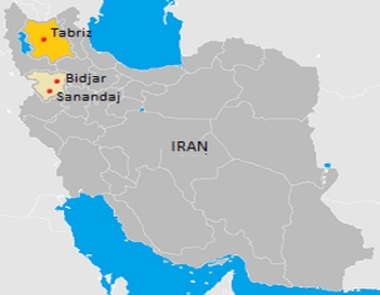Origin and history of the Bidjar carpet
The origins of Bidjar carpets are linked to the city of Bidjar in the Kurdistan region of Iran, which has been the centre of handmade Persian carpets for centuries. The city is known worldwide for its special rugs, which are renowned for their exceptional durability. The inhabitants of the region, especially the Kurds, have passed on the carpet-making traditions for generations, which still define the quality and uniqueness of Bidjar carpets. The history of Bidjar carpets is closely intertwined with the rich cultural heritage of Persia, particularly the carpet-making renaissance of the 18th and 19th centuries. During this period, the carpets were not only sold in local markets, but also found their way to many major cities in Europe and Asia, where they were soon recognised by Persian carpet enthusiasts. The uniqueness of Bidjar carpets lies not only in their artistic design, but also in their weaving technique, which sets them apart from other Persian carpets.

The use of materials in Bijar nomadic carpets
One of the fundamental elements that make nomadic carpets special is the use of materials, which contributes significantly to their durability and quality. Traditionally, Bidjar rugs are made from high quality wool, carefully selected from the region. The wool is tightly twisted and this, combined with the weaving technique, gives the carpets exceptional durability, ensuring that they retain their beauty and functionality for decades. The raw material for the carpets, called "Kurdish wool," is extremely soft yet strong. Natural vegetable dyes are used for the dyeing, which do not fade over time, but develop a beautiful patina. This treatment with natural dyes not only provides aesthetic benefits, but also increases resistance to environmental influences.
Bidjar rug making and weaving techniques
Bidjar rugs are famous for their special and unique weaving technique, which sets them apart from other Persian rugs. One of the best known techniques is the 'wet weaving' method, which involves continuously wetting the carpet during the knotting process. This method allows the wool fibres to knot tighter, making the carpet incredibly dense and durable. This is why Bidjar carpets are also known as "iron carpets". Traditionally, Bidjar carpets are hand-knotted using the Turkish knotting technique (symmetrical knotting). The density of the knots is usually high, which further increases the durability of the carpets. Dense knotting also allows for the creation of detailed patterns, often decorated with geometric or floral motifs. Traditionally, deep, rich colours such as red, blue, green and brown are used.

